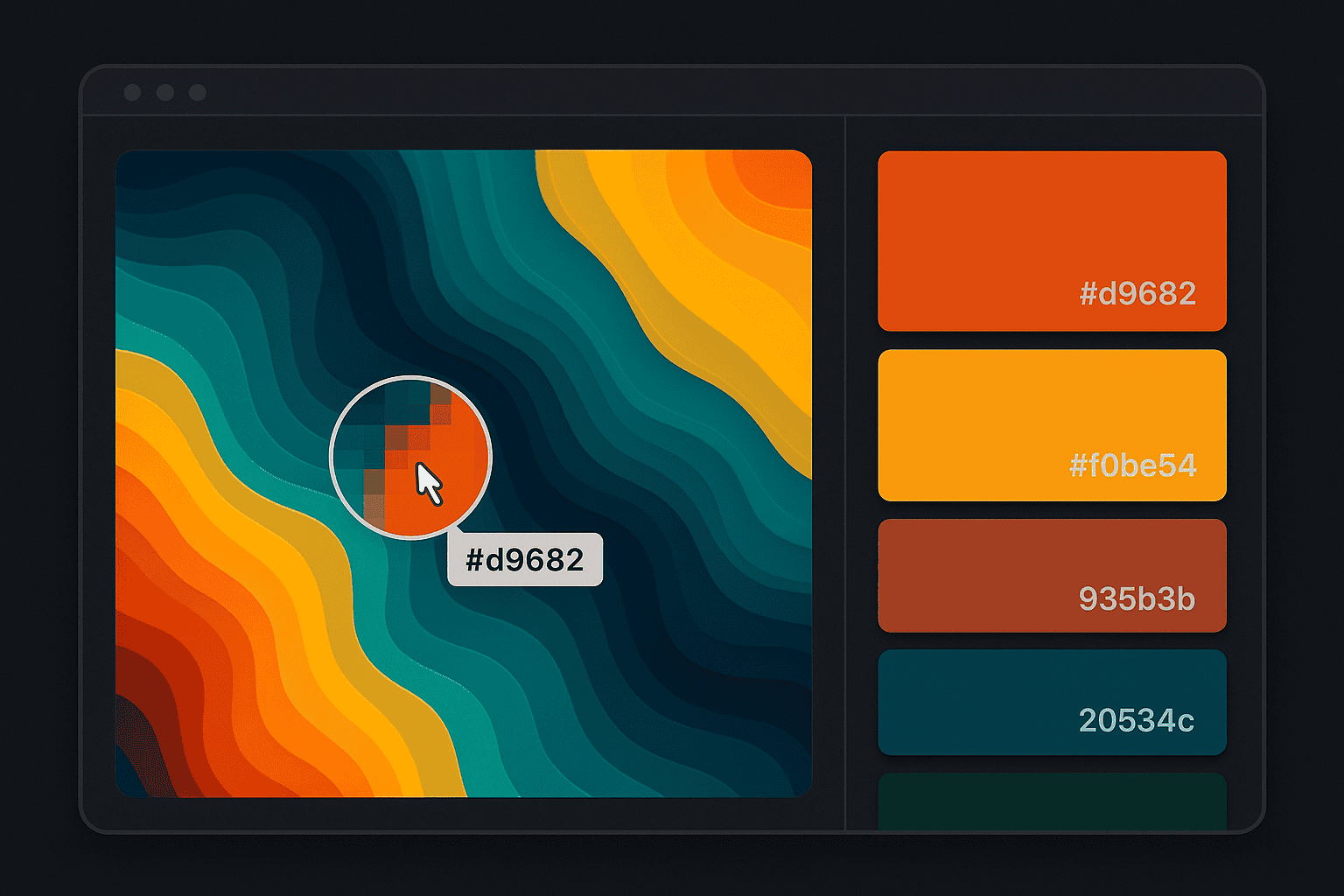Select-Palette | Out-Design

Through My Eyes: Sketching With Certainty
There’s a moment in every project where the palette feels like quicksand. A red that leans a little too orange. A green that refuses to sit still. For me, it’s the part of design that demands both instinct and method. And that’s where I lean on one of my quietest allies: the humble color picker.
Instead of guessing, I sample. One click, and I’ve got a hex code — a little anchor I can trust. If I’m pulling inspiration from a photo, a screen, or even an old mockup, the picker gives me a fixed point. It’s not just about numbers; it’s about grounding the design in something consistent, something that won’t waver no matter how it’s seen.
That small certainty changes the way I work. Once I have that code, I start building around it: stretching tones lighter, pushing them darker, nudging warmth or cooling them off. It’s like sculpting a palette instead of painting it — taking one solid piece and chiseling it into variations that can harmonize across a layout.
But numbers can only take you so far. Colors don’t live in isolation; they hum louder when they sit next to others. A deep blue may feel calm on its own, but set it beside a neon yellow and suddenly it’s electric. That’s why my workflow always includes stepping back and looking at the screen as a whole. I’ll toggle layers, swap backgrounds, or drop the design into mockups just to see how the palette behaves under different lights.
And then comes the most important step: I ask. A second pair of eyes, a trusted colleague, or even someone just passing by. Colors carry moods, and mood is hard to measure with hex codes. What feels balanced to me may feel heavy to someone else. That gut check ensures that what I see on screen also resonates with others — that the design lands not just technically, but emotionally.
The truth is, my process isn’t about chasing perfection. It’s about building confidence. Anchoring hues with hex values. Testing how they play with contrast and composition. Letting feedback fine-tune the final pass. By the time a piece reaches a client, it’s not only polished, it’s resilient — proofed by both code and human eye.
Design, after all, isn’t just about what sits on the screen. It’s about what lingers in the eye after you’ve closed it.
